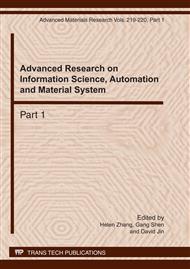p.1679
p.1683
p.1689
p.1693
p.1697
p.1702
p.1707
p.1712
p.1716
Algorithm of Disambiguation and Matching of Chinese Word Segmentation in Connected Strategies Research
Abstract:
The Chinese Word Segmentation technology is belonged to the category of technology of natural language management. Academies which studying Chinese Word Segmentation are mostly Research institutions such as Tsinghua University, Peking University, Chinese Academy of science, Beijing Language And Culture University, Northeastern University, Research Institute of IBM, and Research Institute of Microsoft (China), etc. Firstly, the essay analyze and compare the measurements of operation complexity and Algorithm capability of Chinese Word Segmentation in the dimension of Lucene open source’s environment, and also technologies of Chinese grammar analysis used by Chinese Academy of science. We are going to put forward the algorithm of disambiguation and matching of Chinese Word Segmentation in connected strategies based on the studying of Cloud Computing and Parallel Computing.
Info:
Periodical:
Pages:
1702-1706
Citation:
Online since:
March 2011
Authors:
Price:
Сopyright:
© 2011 Trans Tech Publications Ltd. All Rights Reserved
Share:
Citation:


